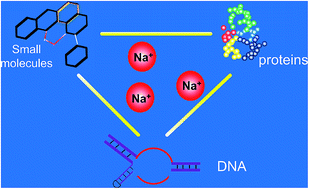Fluorescent sensors for sodium ions
Abstract
Sodium is a highly important metal in biological systems and its concentration in vivo is tightly regulated. However, the fluctuation of sodium levels is still common and problematic and is responsible for several physiological disorders and illnesses, including hypertension and cardiovascular disease. Analytical methods for measuring sodium in biological samples are of great importance for disease diagnosis and for fundamental physiological studies. In this article, various types of fluorescent probes for Na+ based on small molecule chelators, proteins, and nucleic acids are reviewed, and each type has its advantages and disadvantages. While most efforts were made in developing small molecule based fluorescent sensors, recent developments in DNA-based sensing have also been quite promising with excellent sensitivity and selectivity. In particular, a few RNA-cleaving DNAzymes and an aptamer were reported with excellent selectivity for Na+ over K+ and Li+. Currently, the best DNAzyme-based sensors have a detection limit of ∼0.1 mM Na+, and the dynamic range can cover its physiological concentration of ∼140 mM in blood. The limitations of each type of probe are also discussed, and future research opportunities are speculated at the end.



 Please wait while we load your content...
Please wait while we load your content...